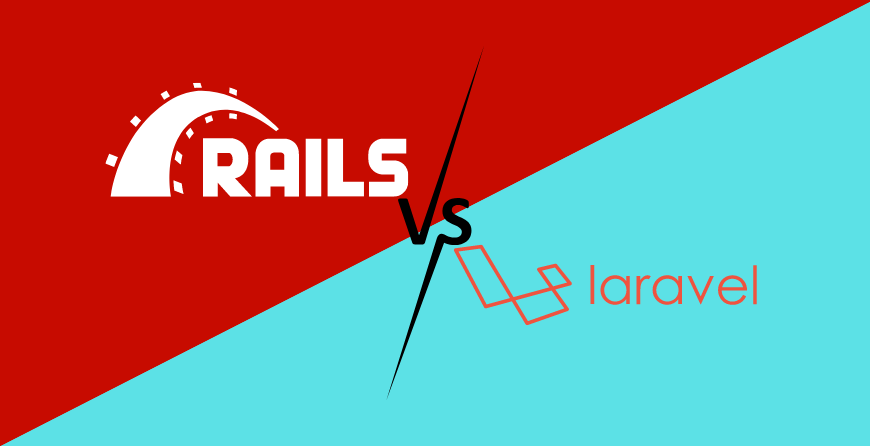To anyone who has played, seen or at least heard of Pokémon Go has seen what is possibly the world’s first widespread commercial application of augmented reality where even 20 years ago, augmented reality could still have been considered a matter of academic study and still in prototyping. While outside of that, and a few rare cases, that hasn’t changed, 10 years from now, graduates are likely to optimise their CVs while applying for augmented reality jobs. Though only a handful of developers today work on augmented reality, augmented reality jobs aren’t limited to just experts in the field. As such, aspiring or working developers have to realise and remember that direct or indirectly augmented reality jobs are not out of their reach.
This article will cover the basics of augmented reality and augmented reality jobs, its working and its relation to Virtual Reality. Outside of that, it will cover some of the potential applications, the current augmented reality jobs available and what aspirants should cover to work with Augmented Reality jobs.
Working of Augmented Reality
Augmented reality is an interactive experience which involves taking the objects and environment in the real world and augmenting it by computer virtualisation. The augmentation is mostly visual but can also include auditory, haptic or even olfactory feedback. For a system to be truly considered as an augmented reality system, it must possess these three features: integration of the real and virtual world, real-time interaction with the objects in the augmented world and accurate representation in three-dimensions of the virtual and real objects.
Generally, the information overlaid may either be destructive (removing objects from the real world in the augmented world) or constructive (adding objects in the augmented world). It differs clearly from its related technology of virtual reality in terms of how much of the real world is overwritten.
The hardware of augmented reality can generally be classified as: microprocessors and/or other similar processing devices and/or databases, sensors and/or similar input devices display and/or similar output devices and finally a headset or similar device to mount them. At present, the need of a separate processor is almost non-existent outside of research as present day smartphones are advanced enough to run augmented reality softwares as just another app. Output devices are responsible for providing feedback to the user and as mentioned before may be visual and auditory through displays and speakers and less commonly may take the form of haptic (touch based) or even olfactory (smell based) feedback.
The standard input device takes the form of sensors that are used to read real-time data in the form of position, orientation etc. Outside of this, input devices may take the form of microphones, controllers etc. The mounting hardware also varies depending upon the application, ranging from neural caps in research to what are essentially cardboard boxes with a mounted smartphone with an augmented reality app. However, in most commercial applications, the hardware takes the forms of eyeglasses with potential future options being currently at the bleeding edge of research such as retinal displays and augmented reality contact lenses. However, it must be kept in mind that not all components are mounted on the mounting hardware as quite often some heavier components such as computational devices are kept separate and connected to the headset with cables in the past and most likely wirelessly in the present.
In terms of software, the primary one is some form of computer vision. The software must be capable of taking real world coordinates independent from the camera. Visual odometry is often the base of CV and it falls under augography which involves generating images (called augograms) for augmented reality. The method of creating such augograms consists of two stages. The first stage involves detecting interest points or similar features using feature detection methods and image processing methods. The second stage involves restoring a real world coordinate system from the data obtained in the first stage. Depending on how much of the scene is known, different methods are used in the second stage mapping process. There are other considerations involved in making the proper software and hardware, such as the method or mode of interaction between user and device, the visual device, application, etc.
Augmented Reality vs. Virtual Reality
The main difference between augmented reality and virtual reality is in the degree of immersion and in the amount by which the real world is overwritten. Virtual Reality requires for the entire scope of the real word visual to be completely overwritten by generated visuals. Other types of output such as audio may or may not be overwritten. However, as stated before in the case of augmented reality, the real world only undergoes partial overwriting or augmented either constructively or destructively. As such, while VR may allow for technically greater immersion, augmented reality possesses a generally greater degree of realism.
Similar to the above point, augmented reality in general allows for greater interactivity as it is quite often a standard part of augmented reality. Augmented reality generally includes interaction through input devices with virtual and real objects, whereas VR is mostly focused on immersivity with interactions being limited to just virtual objects.
As such, augmented reality generally requires greater computation and communication than VR. That is because VR can completely ignore the real world environment and objects whereas augmented reality has to integrate and interact with them.
Present and Possible Future Applications of Augmented Reality and Augmented Reality Jobs
A good indication of the future of augmented reality jobs is by looking at the present and possible future application of this technology. However, there is a clear difference between jobs that use augmented reality as it will be described here and in augmented reality jobs ie. jobs in augmented reality. The current and future possible applications of augmented reality jobs can be classified as follows:
- Academic:
- Augmented reality has found some degree of application as a tool for education and research purposes. For instance, in archaeology augmented reality can be used to recreate ancient structures and overlay them on the real world atop their existing ruins. In education, augmented reality can be used to create 3 dimensional models over the existing 2 dimensional diagrams. This shows potential for better learning through direct interaction in courses that require a high degree of visualisation or hands-on experience such as chemical and mechanical experience and in medicine. However, at the most basic level this wouldn’t require much revamping of current infrastructure. Textbooks can be embedded with markers to act as triggers when scanned with an augmented reality app. Upon being scanned, they can be used to reveal supplementary information for objectives ranging from greater compactness to preventing piracy (e.g. markers can hold reference information to allow students to solve questions without continuously flipping to the appendix or they can hold necessary databases or tables for use case problems that are otherwise unavailable in the book, making the questions unsolvable unless the book was bought officially).
- Business:
- Augmented reality has a degree of applications in the business world, in both the commercial aspect and in the manufacturing one. For instance, in manufacturing and delivery, augmented reality headsets can display the instructions and directions that workers should follow, eliminating the need for separate screens or clipboards. In the commercial aspect, augmented reality apps can be used to allow users to interact with virtual models of items that they want to purchase. For instance, overlaying virtual furniture models to be overlain over the real world rather than guessing the fitting based on dimensions in the description.
- Arts & Entertainment:
- In terms of applications of augmented reality in entertainment, the first thing that comes to mind for many is in gaming. However, despite its proliferation there and being responsible for its introduction to the mainstream consciousness, other forms of arts and entertainment are catching up in terms of usage. For instance, experimental usage has been found in visualising poetry through augmented reality and allowing disabled people to create works of art through a combination of augmented reality and eye movement tracking.
- Design:
- The most common commercial usage of augmented reality outside of gaming is in design. The visualisation here is not limited to just furniture or wearables as in the business example above as quite often architects use them in their projects to supervise a planned structure’s placement in the real world by overlaying the virtual model into the real world. This ensures technical practicality as well as making sure that the building isn’t an eyesore.
Best Options for Augmented Reality Jobs
As stated before, there is a clear difference between jobs that use augmented reality and jobs in augmented reality. As such, this section will lump them together under augmented reality jobs and list them according to the field. The options for augmented reality jobs are as follows:
- 1. Augmented Reality Jobs in Software
- This is ground zero for augmented reality jobs in the world today. The jobs here aren’t in using augmented reality outside of testing but in testing the softwares for augmented reality. Such types of augmented reality jobs are a niche in the overall job market but seeing its growth as a technology in the world today, its expected to grow. As stated before, while the types of people who work in these types of augmented reality jobs are mostly specialists with years or even decades of experience, within 10 years or so, it can be expected that new graduates can look forward to working in companies that utilise augmented reality jobs fresh out of college. The titles for this field of augmented reality jobs includes software developers and software engineers and their knowledge base should include 3D platforms like Oculus, development in specific programming languages and with specialised softwares like Unity.
- 2. Augmented Reality Jobs in Industry
- Previously, the role of augmented reality jobs in industry was limited to an anecdote and a paragraph. However, that is understating the matter especially in the crucial tasks of installation and maintenance. Not unlike surgery, where keyhole methods are seen as a less invasive superior method, invasive maintenance procedures are the cause of most future erros, taking a more surgical approach assisted by augmented reality is a godsend. This is a case of working with augmented reality, treating it as a tool. The people in this field of augmented reality jobs are generally maintenance and installation technicians who have some knowledge of working with augmented reality. As such, their knowledge base consists of the standard technical knowledge base along with additional skills in using 3D tools. This uniquely does not require programming knowledge but it does help in chances of getting hired.
- 3. Augmented Reality Jobs in Design
- One of the most iconic scenes in the Iron Man movies involves the eccentric billionaire playing with fancy holograms. The bleeding edge augmented reality design tool (and the sentient AI behind it) is primarily responsible for how he can single-handedly out-design entire countries and companies. Highly exaggerated, yes, but the idea behind the advantages of such an accessible design tool is undeniable and it hasn’t gone unnoticed. At present where graphical tablets have replaced drawing tables as the most common medium of design, working in actual 3 dimensions rather than on a 2 dimensional screen is undeniable. The professionals who work in this section of augmented reality jobs are generally design engineers and graphic engineers and their knowledge base generally includes programming languages, 3D engines, and computer science and 3D maths.
- 4. Augmented Reality Jobs in Entertainment
- Again, this section is mostly related to augmented reality to the point where augmented reality jobs in gaming and augmented reality jobs in entertainment almost perfectly overlap. Even among game developers, this is a small niche but as technology expands, so too would the number of opportunities in this currently very narrow field of augmented reality jobs. While Pokémon Go may be the most well known example, there’s quite literally over a dozen examples today on over half a dozen platforms. These include the three giants of game platforms i.e. PlayStation, Nintendo and XBox. So, expect there to be breakthroughs here soon and the scope of augmented reality jobs here to grow. At present, the ones who have augmented reality jobs here are game developers and designers with additional training but if augmented reality gains greater traction, it may even occur in reverse i.e. developers and designers with skills in augmented reality tools receiving training to use game develop tools to take up such augmented reality jobs.
- 5. Augmented Reality Jobs in Business
- This field of augmented reality jobs is unique in that it covers both jobs using augmented reality and jobs in augmented reality. In commerce, as mentioned previously, 3D representations are made of items on sale for prospective online buyers and for the offline buyers, embedded markers can serve as a user focused version of the barcode, to be scanned for information that packaging cannot hold. For instance, a small tag can be added to unpackaged items like groceries which would only require a small scan to reveal all relevant information. On the other hand, augmented reality jobs in software and hardware may be the source of business itself. Many software developer companies can develop the necessary softwares for their clients and as mentioned above in regards to the big three of game platforms, so is the sale of the right hardware. While there is a wide overlap between this type of augmented reality jobs and in other fields of augmented reality jobs, some distinction can be made in that the expertise required doesn’t have to be limited to just computer science and mathematics, but to marketing and similar fields.
- 6. Augmented Reality Jobs in Research
- There is an anecdotal story about how a certain protein’s structure befuddled researchers for years until they created a software to create 3D protein folding models with certain fixed rules and released it to the public. The protein model was created within weeks. While there is an obvious lesson here about mass sourcing for tedious research work, the other aspect was in the use of visualisation tools. This was done through a simple 3D puzzle game. With the growth of augmented reality, breakthroughs should not require simple trial and error in parallel, but deliberate research utilising a degree of visualisation that was once limited to the elite in the scientific community. Moreover, with observations in the sciences focusing on the microscopic and macroscopic size, the human eye falls short. As such, simulations are a necessity here and being able to run them in computers to make them visualizable outside of white boards is a boon in allowing for intuitive leaps in research that would otherwise be unreachable.
What is the Future of Augmented Reality Jobs?
At the turn of the millenium, those who first entered the workforce had in their living memory the first introduction to the affordable personal PC and PSAs on the internet and yet today, these professionals are able to use these devices almost subconsciously. As such, many entering the workforce today have seen the first adventures of augmented reality in the world today. SO, while the future is unpredictable, it is a safe assumption that augmented reality jobs will become common in the future.







